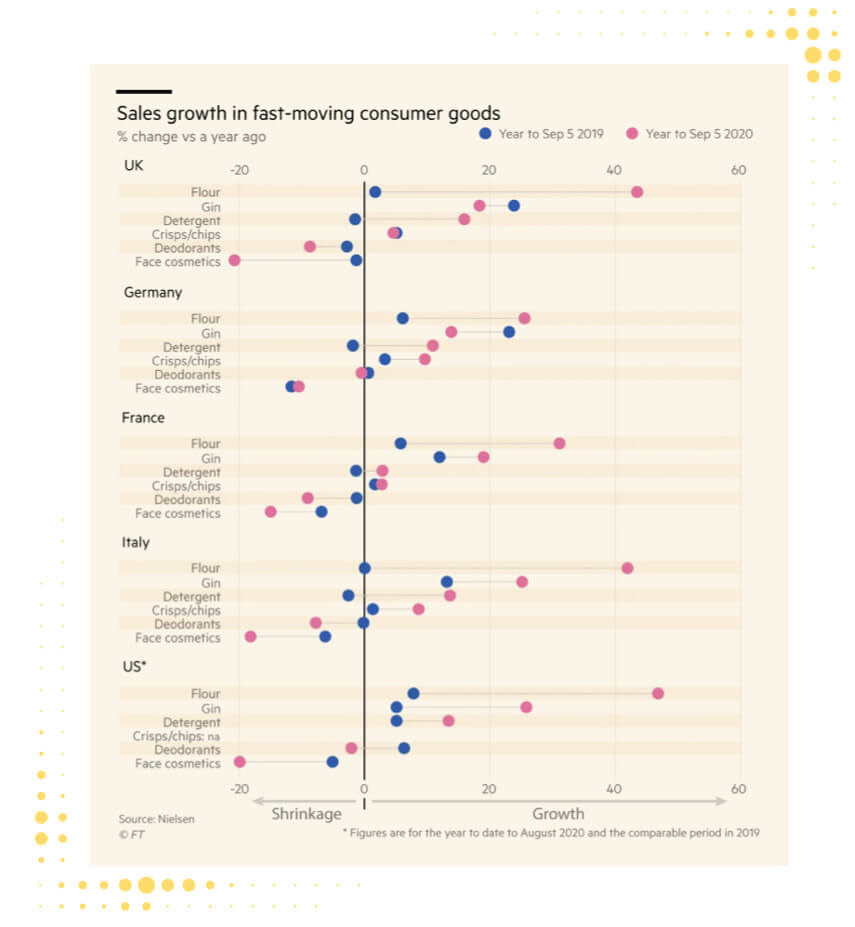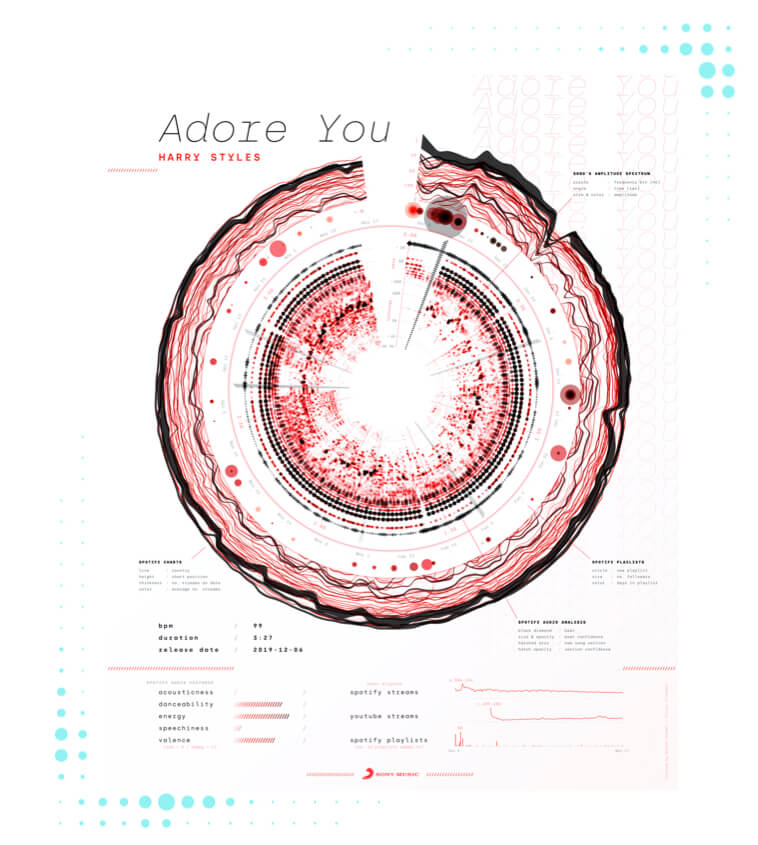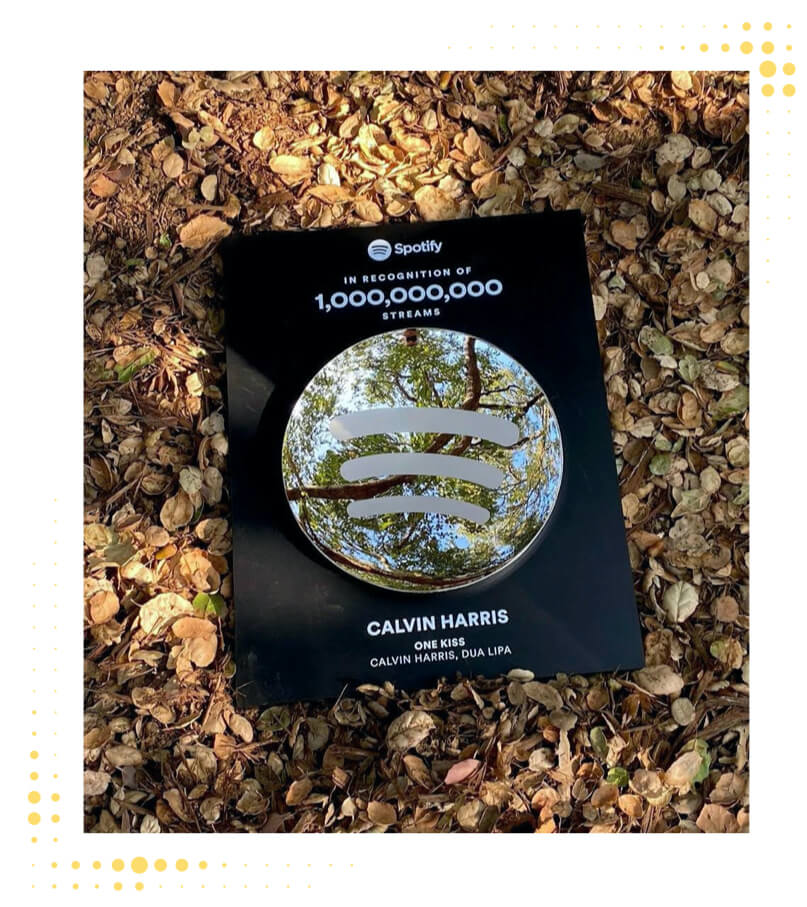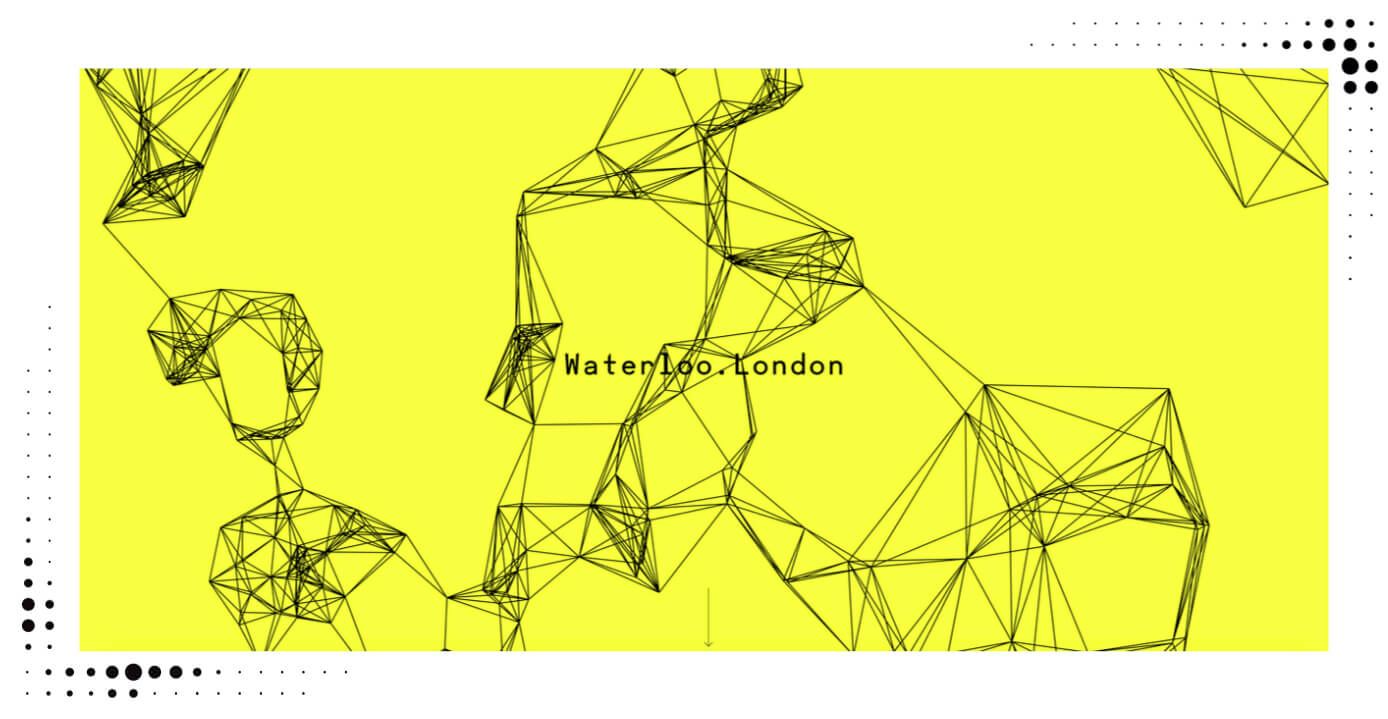 Insight How COVID-19 is changing retail – and what data had to say about it
Insight How COVID-19 is changing retail – and what data had to say about it
It’s been a year of changes and challenges for retailers. Footfall in bricks-and-mortar shops is way down as more of us stay at home. Online retail, though, is booming. While only 9% of global consumers were regularly shopping online before the COVID-19 pandemic, 44% were shopping online each week by May 2020, according to Nielsen research.
Here are three of our favourite data-led activations showcasing how retail is changing – right now.
1. No make-up, crazed baking
Financial Times

This neat visualisation from the FT shows just how much our shopping habits have shifted since the start of the pandemic, with flour, gin and detergent sales all up on a year ago, while deodorants and face cosmetics are down. Nobody needs to smell good for a Zoom call, right?
The trend – which FT journalist Helen Barrett memorably described on Twitter as ‘no make-up, crazed baking’ – is remarkably similar across the five countries plotted. With more lockdowns beginning or about to begin, many of us will be reviving the sourdough starter once again.
![]()
Smart retailers will be using sales data to help model and predict the impact COVID will have on future product sales, NPD and marketing – including the relationship between the purchase of different products.
2. Data-driven art
Sony Music

A big source of comfort for many this year has been music. With more of us stuck inside, US recorded music revenues were up 12% in the first half of 2020 and paid subscriptions (to Spotify, Apple Music and so on) leapt 24% year-on-year, according to RIAA [PDF] figures released in September.
We love Nadieh Bremer’s new series of posters for Sony Music, which visualise audio and streaming data from a selection of music tracks as circular forms resembling a gold disc.

There’s a tonne of data packed into each poster, from a song’s audio characteristics to its Spotify chart rank to its ‘danceability’ (yes, you can access real data on that via the Spotify API).
Curious about how the posters were made? Read Nadieh’s design blog. Then download them all in hi-res.
![]()
Entertainment retailers have more opportunity than ever to create IP through their data – for example, Spotify’s recently launched prestige plaques for singles hitting 1 billion streams. Just imagine if this personalised reward approach extended to Premium member superfans, and what it could do for engagement and loyalty.
3. Retail space future-branding
Waterloo.london

It’s not just retail brands that are innovating in sales techniques – councils and civic spaces in fact often lead the pack, such as The Netherlands’ unique digital-orientated public bike garage. Closer to infogr8’s UK base, Variable and FreshBritain created this lovely bespoke branding tool for the planned new retail space at London’s Waterloo station, inspired by the structure of the building itself.
The custom tool generates logos and animations, powered by data from Waterloo’s distinctive architecture.

The retail space is planned for Waterloo’s former Eurostar terminal and, pandemic permitting, will open in 2021.
![]()
As retail goes through some of its biggest challenges of all time, the physical selling space will need to work harder than ever – including meeting our ever-increasing expectations of digital integration. Using natural or architectural shapes as part of the ‘real world digital’ retail experience will help brands stand out.
infogr8 works on a range of creative solutions to help retailers utilise data to be better informed and improve the customer experience, including Sainsbury’s, Spotify and Virgin Media
